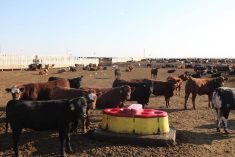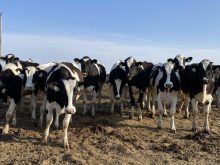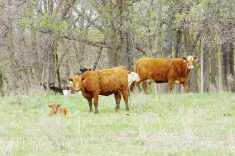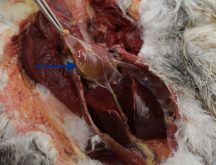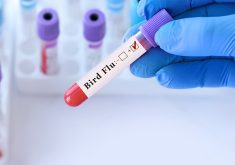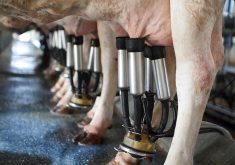Coughing, sneezing, runny beaks and diarrhea are signs a flock is sick, and avian influenza is likely the cause.
When signs are present, producers can have samples from the flock sent to the provincial laboratory for testing to confirm that bird flu is responsible and to determine whether it is a high-pathogenic or low-pathogenic variety. It is then decided if the entire flock needs to be euthanized.
A University of Calgary researcher has been provided with new funding to learn the vector of transmission between migratory, non-migratory and commercial flocks. At the moment, it is unknown if the virus is airborne, transmitted through water or some other way.
Read Also

Trump’s tariffs take their toll on U.S. producers
U.S. farmers say Trump’s tariffs have been devastating for growers in that country.
Professor of virology Faizal Careem has received more than $700,000 from provincial industry stakeholders like Alberta Turkey Producers and Results Driven Agriculture.
The first and worst case of bird flu in Alberta occurred in 2022. Nearly 32 flocks, 20 of them commercial, were affected by the highly infectious type and about 1.4 million birds had to be euthanized.
Bird flu cases usually peak in spring and fall, which led many experts to think it was largely transmitted by migratory birds.
“We know clearly the role of waterfowl, migratory birds, but there is not much information about the non-migratory birds,” says Careem.
Over the last two years, there has been an increase in non-migratory bird deaths due to H5N1, in birds like owls and members of the corvid family.
There is no evidence that small backyard flocks are contributing to the larger bird flu problem in Alberta.
Careem says through surveys of wild birds in 2005, 2006 and 2008, it was found that 10 percent, 29 percent and 15 percent of the wild bird population, respectively, were carrying the virus.
Yet there were flocks that had no contact with wild birds that still succumbed to bird flu in Alberta last year.
Careem says questions are being raised about possible “multiple intrusions of the virus throughout the country.”
He plans to take samples as infections come up.
Careem expects to have an update for producers in six months.
“Canada’s response (has) mainly (been) the identification of infected flocks and destruction of the infected and contaminated ones because Canada thinks there is a foreign animal disease,” says Careem.
The currently available vaccines are ineffective against specific AI strains because there are hundreds of variants. Research is being done with recombinant vaccines, but the results are still in the early stages.
Rapid test kits available in some countries could let producers know if their flocks are infected with bird flu, but they do not tell what strain is present and the level of infection.
Careem says he is applying for further funding with the Alberta government “to develop a method of killing the virus in poultry barns using UV light and some sort of surface coating.”



